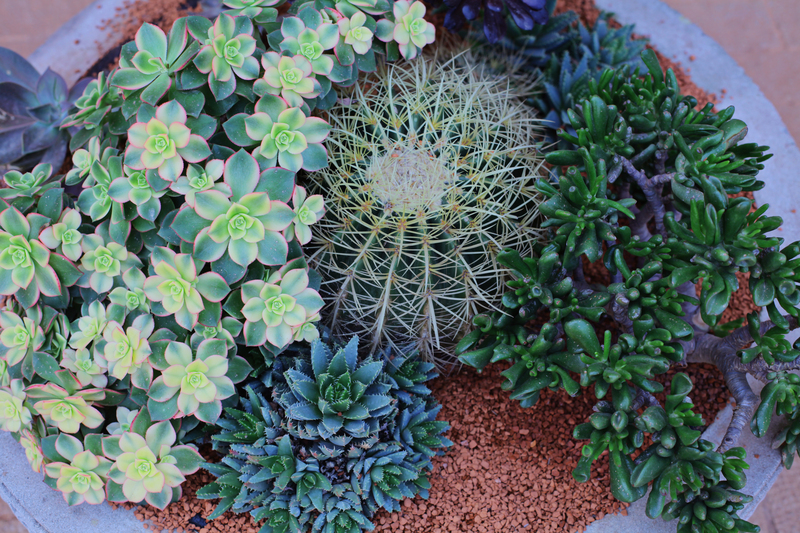Elevate Your Orchard Skills Today
Posted on 09/06/2025
Elevate Your Orchard Skills Today: Unlock the Secrets to a Flourishing Orchard
Are you ready to transform your orchard planting and management into an art? Whether you're a backyard enthusiast or a budding commercial grower, elevating your orchard skills can make all the difference between an average harvest and a thriving, bountiful paradise. In this comprehensive guide, we'll uncover the best practices, advanced techniques, and powerful tips you need to level up your orchard expertise today. From soil health and pruning to pest control and harvest timing, unlock every secret to maximizing fruit yield, flavor, and tree longevity.
Why Focus on Improving Your Orchard Skills?
- Boost Yield and Quality: Advanced skills lead to healthier trees and bigger, tastier fruit.
- Increase Orchard Longevity: Professional care methods help trees live longer and stay productive.
- More Efficient Management: Learn to spot problems early and address them before they escalate.
- Environmental Sustainability: Elevate your orchard methods to conserve water, soil, and resources.
- Financial Rewards: Better skills yield better fruit, which means greater profitability for commercial growers.

Understanding Your Orchard: Site, Climate, and Variety Selection
Before diving into advanced techniques, it's crucial to start with the foundation of a thriving orchard: the right trees in the right place. Your initial choices will impact your orchard's success for years to come.
1. Site Assessment
- Sunlight: Most fruit trees require full sun -- at least 6-8 hours a day -- for optimal fruit production and healthy leaves.
- Soil: Well-drained, fertile soils are a must. Test your soil pH and nutrients before planting.
- Elevation and Exposure: Avoid frost pockets and consider shelterbelt planting to protect young trees from wind damage.
- Water Access: Proximity to a reliable water source is essential for new plantings and dry spells.
2. Choosing Suitable Fruit Varieties
- Climate Compatibility: Know your USDA hardiness zone or local equivalents to avoid winter-kill or heat stress.
- Pest and Disease Resistance: Opt for disease-resistant cultivars to minimize maintenance and chemical interventions.
- Pollination Requirements: Some fruit types, like apples and pears, need compatible varieties for cross-pollination. Plan your lay-out accordingly.
Soil Health: The Bedrock of Every Successful Orchard
How to Elevate Your Orchard's Soil Fertility
Soil is the life force of any orchard. Enhancing orchard performance begins below ground, where roots access the nutrients and water.
- Regular Soil Testing: Conduct tests every 2-3 years to monitor pH and nutrient balance.
- Compost and Organic Amendments: Add organic matter to improve soil structure, drainage, and microbial life.
- Mulching: Use organic mulches (like wood chips or straw) to conserve moisture, regulate temperature, and suppress weeds.
- Cover Cropping: Plant cover crops in the off-season to prevent erosion and fix nitrogen.
- Avoid Over-Fertilizing: Balancing nutrients is key -- too much nitrogen can reduce fruiting and trigger excessive leaf growth.
Advanced Orchard Soil Management Tips
- Use Mycorrhizal Fungi: These beneficial fungi increase nutrient and water uptake for trees.
- Monitor Soil Compaction: Avoid heavy machinery around tree roots and use deep mulching to encourage aeration.
Tree Planting: Setting the Stage for Lifelong Success
Proper Planting Techniques
- Correct Depth: Set the graft union above soil level, with roots spread naturally.
- Spacing Matters: Research the mature size of each variety to prevent crowding and optimize sunlight exposure.
- Immediate Watering: Water new trees thoroughly to eliminate air pockets and establish roots.
- Stake Young Trees: Secure with flexible ties and remove stakes after 1-2 years to establish trunk strength.
Pruning Like a Pro: The Cornerstone of Orchard Management
Pruning is both an art and a science. Mastering this skill is essential to elevate your orchard management and ensure healthy tree structure, disease prevention, and high fruit quality.
When and How to Prune
- Winter Pruning (Dormant Season): Ideal for most fruit trees. Removes crowded, dead or diseased wood and sets the framework.
- Summer Pruning: Helpful for controlling growth on vigorous trees and opening up light.
- Tools: Keep pruners, saws, and loppers clean and sharp to minimize disease spread.
Pruning Techniques to Enhance Orchard Potential
- Thinning Cuts: Remove entire branches to reduce crowding and improve airflow.
- Heading Cuts: Shorten branches to encourage side shoots and denser canopies.
- Train Young Trees: Use branch spreading and tying to develop strong, balanced frameworks.
- Renewal Pruning: For older orchards, rejuvenate by removing old wood and encouraging new shoots.
Integrated Pest and Disease Management: Smart, Sustainable Solutions
Safeguard your orchard's health and productivity with a blend of prevention, observation, and intervention. Elevate your skills by adopting an Integrated Pest Management (IPM) approach.
Key Strategies for Orchard Pest Control
- Regular Monitoring: Walk your orchard weekly to spot early signs of pests or diseases.
- Encourage Beneficial Insects: Plant insectary strips and avoid broad-spectrum insecticides.
- Cultural Practices: Remove fallen fruit and prune infected wood promptly.
- Targeted Sprays: If needed, use organic or reduced-risk sprays only on affected trees and at optimal timing.
- Disease-Resistant Varieties: Start with trees less susceptible to common local problems.
The Art of Orchard Irrigation: Efficient Watering for Lustrous Growth
Water management is a vital yet often overlooked aspect of orchard care. Over-watering or under-watering can stress trees, reduce fruit quality, and even promote disease. Upgrade your orchard skills by mastering irrigation.
Orchard Watering Best Practices
- Drip Irrigation: Delivers water precisely to the root zone, conserving water and reducing disease risk.
- Soil Moisture Monitoring: Use probes or dig small holes to check soil moisture levels regularly.
- Water Deeply, Less Frequently: Encourage deep root growth with thorough, spaced-out watering sessions.
- Mulch to Retain Moisture: A thick layer of organic mulch reduces evaporation.
- Adjust for Weather: Cut back watering during rainy periods or increase during droughts.
Harvesting for Peak Flavor and Quality
Elevate your fruit-picking skills to ensure your hard work pays off in the form of the sweetest, healthiest harvests.
How to Harvest Orchard Fruit Like an Expert
- Know the Signs of Ripeness: Each fruit will have unique indicators: color, odor, ease of picking, and firmness.
- Handle with Care: Use gentle twisting or snipping to avoid bruising tender fruit.
- Harvest in Cool Hours: Early morning or evening harvest preserves flavor and quality.
- Post-Harvest Handling: Store fruit in cool, ventilated areas and sort for quality.
Continual Learning: The Key to Elevate Your Orchard Skills Further
Orchard management is both a science and a journey. Methods change as climate, pests, and market demands evolve. Stay at the cutting edge by fostering a habit of continual learning and sharing knowledge with other growers.
Resources for Orchard Skill Advancement
- Workshops and Field Days: Local agricultural extensions or horticultural societies often run practical learning sessions.
- Online Forums: Connect with orchardists globally for advice and troubleshooting.
- Books and Research: Invest in modern fruit cultivation texts tailored to your region.
- On-Site Visits: Touring successful orchards provides irreplaceable practical insights.
Connect with Experts and Peers
Join grower associations and online groups to ask questions, share triumphs, and keep up to date with the latest innovations in orchard management.

Top Tips to Elevate Your Orchard Skills Instantly
- Start a Record-Keeping System: Log planting dates, varieties, fertilizer applications, and pest or disease issues.
- Practice Timely Interventions: The earlier you identify problems, the easier (and cheaper) they are to fix.
- Experiment: Try out new varieties, planting methods, or organic pest controls on small sections before scaling up.
- Network with Local Growers: Sharing successes and challenges speeds up your learning curve.
- Never Stop Learning: The best orchardists are always curious and open-minded.
Conclusion: Grow Beyond the Basics - Elevate Your Orchard Expertise Today
Transforming your orchard into a fertile, productive, and healthy haven is entirely possible once you elevate your orchard skills. By embracing soil management, precise pruning, proactive pest and disease control, and continual education, you can turn every season into a success. Remember--the finest fruits come not only from good land but from the hands and minds that tend them. Take the steps outlined above, and you'll watch your orchard flourish like never before.
Ready to take the next step? Begin implementing these strategies today to experience the difference that advanced orchard skills can make!

